The Role of Preventative Maintenance in Protecting Your Investment
Introduction
Protecting your investment, whether in real estate, equipment, or business assets, requires a proactive approach. Preventative maintenance plays a crucial role in ensuring long-term value, minimizing repair costs, and enhancing asset performance. By adopting a well-structured maintenance strategy, investors can safeguard their properties and equipment against costly breakdowns and depreciation. This guide explores the importance of preventative maintenance, its key benefits, best practices, and actionable strategies tailored to different types of investments.
Understanding Preventative Maintenance
What Is Preventative Maintenance?
Preventative maintenance (PM) refers to the routine inspection, servicing, and repair of assets to prevent unexpected failures. Unlike reactive maintenance, which addresses issues after they occur, preventative maintenance aims to detect and resolve potential problems before they escalate.
Key Principles of Preventative Maintenance
Regular Inspections: Identifying minor issues before they turn into major repairs.
Scheduled Servicing: Conducting periodic maintenance to ensure optimal performance.
Documentation and Tracking: Keeping records of maintenance activities for accountability and efficiency.
Use of Technology: Implementing automated systems to monitor asset conditions.
Training and Awareness: Educating stakeholders about maintenance importance and best practices.
Benefits of Preventative Maintenance
Cost Savings
Reduces emergency repair expenses.
Extends the lifespan of assets, delaying replacement costs.
Prevents productivity losses due to unexpected downtime.
Increased Asset Value
Maintains the structural integrity of properties and equipment.
Enhances resale value by ensuring assets are in excellent condition.
Safety and Compliance
Reduces the risk of accidents caused by malfunctioning equipment.
Ensures adherence to industry regulations and standards.
Energy Efficiency
Well-maintained systems operate efficiently, lowering energy costs.
Reduces environmental impact through optimized resource usage.
Long-Term Impact on Investment Protection
Preventative maintenance goes beyond immediate cost savings; it contributes to long-term investment protection. A property with well-maintained HVAC systems, plumbing, and electrical wiring will remain in demand, increasing its value over time. Similarly, regularly serviced industrial machinery will have a longer operational life, reducing the need for frequent replacements and minimizing business disruptions.
Implementing an Effective Preventative Maintenance Strategy
Assessing Your Maintenance Needs
Before developing a maintenance plan, it’s essential to evaluate the specific needs of your investment. Key considerations include:
Type of Asset: Buildings, machinery, or technology require different maintenance approaches.
Usage Frequency: High-traffic areas or heavily used equipment need more frequent servicing.
Environmental Factors: Climate and external conditions impact wear and tear.
Manufacturer Recommendations: Following guidelines provided by asset manufacturers.
Developing a Maintenance Schedule
A well-structured maintenance schedule ensures consistency and efficiency. Steps to create a schedule include:
Inventory Assessment: Listing all assets requiring maintenance.
Prioritization: Categorizing assets based on their importance and vulnerability.
Task Allocation: Assigning maintenance responsibilities to qualified personnel.
Calendar Integration: Setting up reminders and alerts for scheduled maintenance.
Review and Adjustments: Periodically evaluating the plan’s effectiveness and making necessary changes.
Leveraging Technology for Maintenance Management
Modern technology simplifies maintenance management through automation and data analytics. Key tools include:
Computerized Maintenance Management Systems (CMMS): Tracks maintenance history and schedules tasks.
Internet of Things (IoT) Sensors: Monitors asset conditions in real time.
Mobile Maintenance Apps: Enables remote access to maintenance records and updates.
Predictive Analytics: Uses data-driven insights to anticipate maintenance needs before breakdowns occur.
Industry-Specific Approaches to Preventative Maintenance
Real Estate and Property Management
Conducting seasonal inspections to prepare for weather-related issues.
Scheduling routine HVAC maintenance to ensure optimal tenant comfort.
Performing roof inspections to prevent leaks and water damage.
Manufacturing and Industrial Equipment
Implementing machine lubrication schedules to reduce friction-related wear.
Conducting vibration analysis to detect equipment imbalances.
Utilizing infrared thermography to identify overheating components.
Fleet Management
Tracking vehicle mileage and scheduling oil changes accordingly.
Inspecting tire conditions to prevent blowouts and accidents.
Ensuring compliance with emission regulations through regular testing.
Overcoming Common Challenges in Preventative Maintenance
Despite its advantages, implementing a preventative maintenance program can be challenging. Some common obstacles include:
Budget Constraints
Solution: Prioritize critical assets and allocate maintenance budgets accordingly.
Solution: Implement cost-effective strategies, such as predictive analytics, to optimize spending.
Resistance to Change
Solution: Educate stakeholders on the long-term benefits of preventative maintenance.
Solution: Demonstrate cost savings and efficiency improvements to gain buy-in.
Lack of Skilled Workforce
Solution: Provide training programs for staff to enhance their maintenance capabilities.
Solution: Outsource maintenance tasks to specialized professionals when necessary.
Inconsistent Implementation
Solution: Establish clear maintenance protocols and accountability measures.
Solution: Use technology to automate and streamline maintenance tracking.
Best Practices for a Sustainable Preventative Maintenance Program
Establishing a Maintenance Culture
A successful preventative maintenance strategy requires a shift in mindset. Encouraging a maintenance-focused culture among employees and stakeholders leads to long-term program sustainability. Ways to foster this culture include:
Incentivizing proactive maintenance behaviors.
Providing regular training on maintenance best practices.
Communicating the direct benefits of maintenance to all stakeholders.
Performance Measurement and Continuous Improvement
To ensure effectiveness, maintenance programs should include performance evaluation metrics such as:
Mean Time Between Failures (MTBF): Measures equipment reliability.
Mean Time to Repair (MTTR): Assesses maintenance response efficiency.
Total Maintenance Costs: Tracks expenses against budgeted allocations.
Partnering with Professional Maintenance Services
For specialized maintenance needs, partnering with professional service providers ensures high-quality upkeep. Benefits include:
Access to skilled technicians with industry-specific expertise.
Advanced diagnostic tools for precise issue identification.
Scheduled service agreements for consistent maintenance execution.

Get a Free Rental Analysis
Want to know how much your home will rent for? We’ll send you a free rental report!
Implementing an Effective Preventative Maintenance Strategy
Assessing Your Maintenance Needs
Before developing a maintenance plan, it’s essential to evaluate the specific needs of your investment. Key considerations include:
- Type of Asset: Different assets, such as buildings, machinery, and vehicles, require unique maintenance approaches.
- Usage Frequency: High-traffic areas or heavily used equipment may need more frequent servicing.
- Environmental Factors: Climate, weather conditions, and external elements impact wear and tear.
- Manufacturer Recommendations: Following maintenance guidelines provided by asset manufacturers ensures longevity and efficiency.
A comprehensive assessment will help identify the most critical maintenance areas and determine the necessary resources.
Developing a Maintenance Schedule
A well-structured maintenance schedule ensures consistency and efficiency in asset upkeep. Steps to create an effective plan include:
- Inventory Assessment: Create a list of all assets requiring maintenance, noting their condition and maintenance history.
- Prioritization: Rank assets based on their importance, potential failure risk, and cost implications.
- Task Allocation: Assign maintenance responsibilities to trained personnel or third-party service providers.
- Calendar Integration: Schedule maintenance tasks and set reminders to ensure timely execution.
- Review and Adjustments: Regularly evaluate the effectiveness of the plan and make necessary changes based on asset performance and emerging needs.
Consistency is key—adhering to the schedule minimizes downtime, reduces repair costs, and extends asset life.
Leveraging Technology for Maintenance Management
Advancements in technology have transformed maintenance management, allowing businesses and property owners to automate and optimize their maintenance strategies. Key tools include:
- Computerized Maintenance Management Systems (CMMS): These systems track maintenance history, schedule tasks, and generate reports for improved decision-making.
- Internet of Things (IoT) Sensors: IoT-enabled sensors monitor asset conditions in real time, detecting early signs of wear and potential failures.
- Mobile Maintenance Apps: Enable remote access to maintenance logs, task assignments, and real-time status updates.
- Predictive Analytics: Uses data-driven insights to anticipate maintenance needs before breakdowns occur.
Integrating these technologies enhances efficiency, reduces manual errors, and ensures proactive maintenance execution.
Industry-Specific Approaches to Preventative Maintenance
Real Estate and Property Management
Property owners and managers must prioritize preventative maintenance to enhance tenant satisfaction, preserve property value, and reduce repair costs. Key practices include:
- HVAC System Maintenance: Routine inspections and filter replacements improve energy efficiency and tenant comfort.
- Plumbing Inspections: Regular checks prevent leaks, water damage, and costly emergency repairs.
- Roof and Gutter Maintenance: Cleaning and inspecting roofs and gutters prevent structural damage from water infiltration.
- Pest Control Measures: Scheduled pest control treatments help maintain sanitary conditions and prevent infestations.
Manufacturing and Industrial Equipment
For industrial businesses, equipment reliability is critical for operational efficiency and profitability. Best practices include:
- Lubrication Schedules: Regular lubrication reduces friction-related wear and extends machinery life.
- Vibration Analysis: Detects imbalances or misalignments in rotating equipment before they lead to major failures.
- Infrared Thermography: Identifies overheating components in electrical systems and machinery.
- Operator Training: Ensuring operators follow proper equipment usage and maintenance procedures minimizes premature wear.
Fleet Management
Vehicle fleets require structured maintenance programs to maximize fuel efficiency, ensure driver safety, and reduce unexpected breakdowns. Essential steps include:
- Mileage-Based Servicing: Scheduling oil changes, brake inspections, and transmission checks based on usage.
- Tire Inspections: Regularly monitoring tire pressure and tread wear to prevent blowouts and accidents.
- Battery and Electrical System Checks: Ensuring electrical components function correctly to prevent failures.
- Compliance Monitoring: Keeping up with emissions regulations and safety inspections to meet legal requirements.
Overcoming Common Challenges in Preventative Maintenance
Despite its advantages, implementing a preventative maintenance program comes with challenges. Addressing these issues proactively ensures program success.
Budget Constraints
Many businesses and property owners hesitate to invest in preventative maintenance due to budget limitations. However, neglecting maintenance often results in higher costs in the long run. Strategies to manage budget constraints include:
- Prioritizing Critical Assets: Focus on high-value or high-risk assets to ensure essential maintenance is not overlooked.
- Adopting Cost-Effective Solutions: Use predictive analytics to optimize maintenance timing, reducing unnecessary expenses.
- Negotiating Service Contracts: Establish long-term contracts with maintenance providers to secure better pricing.
Resistance to Change
Employees or property managers may resist adopting a preventative maintenance approach due to a preference for reactive maintenance. Overcoming this resistance involves:
- Educating Stakeholders: Highlighting the cost savings, efficiency improvements, and risk reduction associated with preventative maintenance.
- Demonstrating ROI: Presenting data-driven results from maintenance programs to show tangible benefits.
- Encouraging Participation: Involving employees and tenants in maintenance planning to increase engagement and compliance.
Lack of Skilled Workforce
A shortage of trained maintenance personnel can hinder program effectiveness. Solutions include:
- Providing Ongoing Training: Regular workshops and certifications help staff stay updated on best practices.
- Outsourcing Maintenance Services: Hiring specialized technicians ensures high-quality maintenance execution.
- Implementing User-Friendly Technology: Leveraging digital tools makes maintenance management easier, even with a limited workforce.
Inconsistent Implementation
If maintenance tasks are not performed consistently, assets may deteriorate despite having a plan in place. To ensure reliable execution:
- Establish Clear Protocols: Define roles, responsibilities, and step-by-step procedures for maintenance tasks.
- Utilize Automation: Implement CMMS and automated scheduling tools to reduce human error.
- Conduct Regular Audits: Reviewing maintenance logs and performance data helps identify gaps and areas for improvement.

Measuring the Success of Preventative Maintenance
Key Performance Indicators (KPIs) for Maintenance Efficiency
To ensure a preventative maintenance program is delivering the expected results, it’s crucial to track key performance indicators (KPIs). These metrics provide insights into maintenance effectiveness and help identify areas for improvement. Some essential KPIs include:
- Mean Time Between Failures (MTBF): Measures the average time an asset operates before experiencing a failure. A higher MTBF indicates an effective maintenance strategy.
- Mean Time to Repair (MTTR): Tracks the average time required to repair a failed asset. The goal is to reduce MTTR through efficient maintenance practices.
- Scheduled Maintenance Compliance (SMC): Evaluates how consistently maintenance tasks are performed according to schedule. A high SMC score ensures reliability.
- Maintenance Cost as a Percentage of Asset Value: Helps determine whether maintenance expenses are proportionate to asset worth.
- Downtime Reduction: Tracks the percentage decrease in unplanned downtime due to preventative maintenance measures.
By regularly analyzing these KPIs, businesses and property owners can fine-tune their maintenance programs for maximum efficiency.
Conducting Regular Maintenance Audits
Periodic audits are essential for assessing the effectiveness of a preventative maintenance strategy. A thorough audit should include:
- Review of Maintenance Logs: Examining records to ensure all scheduled maintenance tasks have been completed.
- Asset Performance Analysis: Comparing asset performance before and after implementing preventative maintenance measures.
- Cost-Benefit Evaluation: Determining whether maintenance expenses are leading to measurable savings and extended asset lifespan.
- Compliance Checks: Ensuring maintenance activities align with industry standards, safety regulations, and manufacturer guidelines.
Regular audits help identify weaknesses in the maintenance plan and provide opportunities for continuous improvement.
Gathering Feedback from Maintenance Teams and Stakeholders
Successful preventative maintenance programs involve collaboration between maintenance teams, management, and stakeholders. Gathering feedback can improve execution and address challenges proactively. Effective methods for collecting feedback include:
- Maintenance Team Meetings: Encouraging technicians to share observations, report recurring issues, and suggest improvements.
- Tenant and Employee Input: In real estate and corporate settings, tenants and employees can report maintenance concerns that may not be immediately visible.
- Customer Satisfaction Surveys: In industries like hospitality and retail, customer feedback can highlight maintenance-related issues affecting experience.
By considering feedback from all parties, organizations can refine maintenance practices and enhance overall asset performance.
The Long-Term Benefits of Preventative Maintenance
Increased Asset Longevity
One of the most significant advantages of preventative maintenance is the extended lifespan of assets. Whether it’s a commercial building, manufacturing equipment, or a vehicle fleet, regular upkeep prevents premature wear and deterioration. This reduces the frequency of expensive replacements, leading to substantial cost savings over time.
For example, a well-maintained HVAC system can last up to 20 years, whereas a neglected system may fail within 10 years. Similarly, proper lubrication and calibration of machinery can prevent excessive strain, ensuring long-term operational efficiency.
Improved Safety and Risk Reduction
Neglecting maintenance can lead to hazardous conditions, increasing the risk of accidents, injuries, and liability claims. Preventative maintenance minimizes risks by:
- Identifying Safety Hazards Early: Regular inspections detect issues such as faulty wiring, structural weaknesses, or gas leaks before they become serious threats.
- Ensuring Regulatory Compliance: Many industries have strict maintenance regulations, and failure to comply can result in fines or legal issues.
- Reducing Workplace Accidents: In industrial settings, well-maintained equipment minimizes the chances of malfunctions that could harm employees.
For property managers, preventative maintenance ensures safe living conditions for tenants, preventing incidents such as mold growth, fire hazards, or plumbing failures.
Energy Efficiency and Cost Savings
Preventative maintenance directly contributes to energy efficiency, which translates into lower utility costs. Some energy-saving benefits include:
- HVAC Optimization: Regular filter changes and system tune-ups improve efficiency, reducing energy consumption.
- Equipment Calibration: Properly calibrated machinery runs more efficiently, minimizing wasted energy.
- Water Conservation: Fixing leaks and maintaining plumbing systems prevents unnecessary water waste.
- Lighting Maintenance: Ensuring lights and electrical systems function properly reduces excessive power usage.
By prioritizing maintenance, businesses and property owners can significantly lower operating costs while reducing their environmental impact.
Enhanced Property Value and Reputation
For real estate investors and property managers, well-maintained properties hold greater market value and attract high-quality tenants. Key benefits include:
- Higher Rental and Resale Value: A property in excellent condition can command higher rental rates and sale prices.
- Reduced Vacancy Rates: Tenants are more likely to renew leases when properties are well-maintained and free of persistent maintenance issues.
- Positive Reputation: A proactive maintenance approach builds trust and credibility among tenants, customers, and stakeholders.
For business owners, maintaining a clean and functional facility improves brand perception, encouraging customer retention and loyalty.
Final Thoughts: Making Preventative Maintenance a Priority
Preventative maintenance is not just a cost-saving strategy—it is an investment in asset longevity, safety, efficiency, and profitability. Whether managing real estate, industrial equipment, or vehicle fleets, implementing a structured maintenance plan yields long-term rewards.
By assessing maintenance needs, leveraging technology, addressing common challenges, and tracking performance metrics, businesses and property owners can protect their investments effectively. The key is consistency: regular inspections, proactive servicing, and continuous improvements ensure that assets remain in peak condition for years to come.
Embracing a preventative maintenance mindset today will prevent costly repairs and unexpected failures in the future—making it a smart, strategic decision for any investment.
Suggested Relevant Links:
Maintenance and Repair Services Palm Beach
Preventive Maintenance: How Hiring a Manager Can Save You Thousands in Avoidable Repairs
Choosing the Right Property Management Companies in Palm Beach
How Property Managers Ensure Effective Maintenance Management in Palm Beach County
Frequently Asked Questions (FAQ) About Preventative Maintenance
1. What is preventative maintenance?
Preventative maintenance is routine servicing of assets to prevent failures, extend lifespan, and reduce repair costs.
2. How is it different from reactive maintenance?
Reactive maintenance fixes issues after they occur, while preventative maintenance prevents breakdowns before they happen.
3. What are the key benefits?
- Lower repair costs
- Extended asset lifespan
- Improved safety
- Increased efficiency
- Reduced downtime
4. What industries use preventative maintenance?
It’s essential in real estate, manufacturing, healthcare, transportation, and retail.
5. How often should maintenance be performed?
Frequency depends on the asset, but common schedules include:
- HVAC: Quarterly
- Vehicles: 3,000–10,000 miles
- Machinery: Monthly/quarterly
6. How can technology help?
CMMS software, IoT sensors, and predictive tools improve scheduling, tracking, and efficiency.
7. How do I measure its success?
Track key performance indicators (KPIs) like downtime reduction, cost savings, and extended asset life.
8. Is preventative maintenance cost-effective?
Yes! It reduces emergency repairs, improves efficiency, and increases long-term savings.
Let me know if you need adjustments!




Pingback: Tax Benefits for Landlords in Florida- Atlis Property Management | Rental Property Management South Florida
Pingback: How to Manage Property Management Fees and Expenses- Atlis Property Management | Rental Property Management South Florida